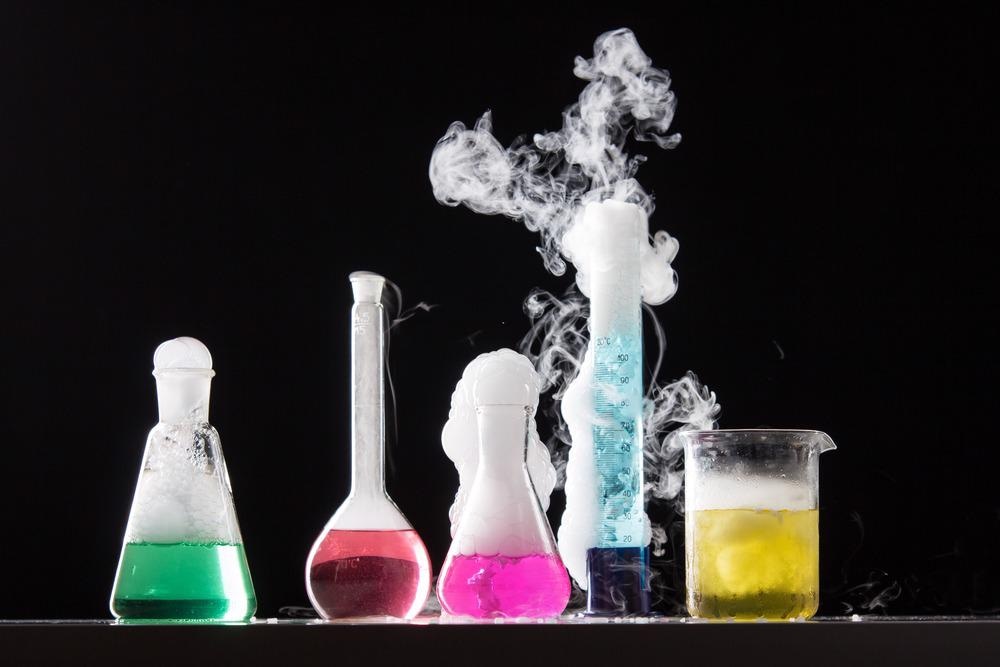A team of researchers from the University of Cambridge has developed a chemical ‘camera’ using a molecular glue that allows chemical reactions to be observed in real-time. The device is made up of semiconductor nanocrystals, referred to as quantum dots, and gold nanoparticles held together with a molecular glue called cucurbituril, with potential applications for a wide range of sectors due to its ease of use.

Image Credit: Michal Ludwiczak/Shutterstock.com
The research was published in the journal Nature Nanotechnology, and shows that once added to water, these components self-assemble to produce a tool that allows monitoring of chemical reactions as they happen. As well as being a powerful device, it is stable and assembles in seconds.
Using the light within the semiconductor nanocrystals, the camera causes an electron transfer process to take place, enabling the researchers to use spectroscopy to observe chemical species directly. Previously, this ability had only been theorized.
What is the Nano Camera?
The nano camera is produced by combining semiconductor nanocrystals, gold nanoparticles, and cucurbituril to produce a stable, hybrid material that interacts with light and allows for real-time monitoring of chemical reactions. Professor Oren Scherman and his team at Cambridge's Cavendish Laboratory and University College London developed this new method.
The semiconductor nanocrystals act as assembly modulators, controlling the assembly of the larger gold nanoparticles through a process which the team named ‘interfacial self-limiting aggregation’. Doing so enabled the production of a stable hybrid material that can interact with light, composing the nano camera.
In the laboratory, the team combined the individual components of their camera along with the molecule they wished to observe in water at room temperature. Past attempts to mix gold nanoparticles with cucurbituril led to items undergoing unlimited aggregation. However, the addition of semiconductor nanocrystals to the mixture produced a stable semiconductor-metal hybrid.
Key Findings
The researchers used spectroscopy to observe the chemical reactions once the components were mixed together. With the camera's presence, they observed the formation of a radical species and products of the assembly, including a sigma violgen dimeric species, the product of two radicals forming a reversible carbon-carbon bond.
All the components used are readily available, and the camera can be formed without the need for extreme conditions.
We were surprised how powerful this new tool is, considering how straightforward it is to assemble.
Dr. Kamil Sokolowksi, first author
Individually, each component's properties and uses are well known, but their unique combination makes this research an innovation.
For example, cucurbituril is a macrocyclic molecule made up of glycoluril monomers linked by a methylene bridge. It has a high affinity, highly selective, and its binding properties have led to use as a molecular 'glue' in the aggregation of nanoparticles in the past.
Both the aggregation of semiconductor nanocrystals and old nanoparticles are well documented; however, their use with cucurbituril to produce a nano camera is a novelty that could be pivotal in understanding other significant reactions in nanotechnology.
The Future of the Nano Camera in Nanotechnology Research
The nano camera has vast potential to be used in research and industry. It is inexpensive and straightforward to produce, meaning that it can replace more expensive, complicated methods which were not accessible in the past.
The type of complex hybrid produced can be formed in nature thanks to a self-limiting process, but this is not easy to replicate under lab conditions and is often a costly and lengthy process.
This innovative, simple process can be applied to many different combinations of metal nanoparticles and semiconductor nanocrystals that could not form hybrids in a laboratory previously, therefore providing new opportunities for imaging chemical reactions.
In a press release from the University of Cambridge, Dr. Sokolowski explained "This platform is a really big toolbox considering the number of metal and semiconductor building blocks that can be now coupled together using this chemistry– it opens up lots of new possibilities for imaging chemical reactions and sensing through taking snapshots of monitored chemical systems."
One of the industries that may benefit from the use of the nano camera is renewable energies. The Scherman lab in Cambridge team is already working on developing a hybrid that will allow the observation of electron-transfer processes in artificial photosynthetic systems and photocatalysis.
Understanding and harnessing an artificial photosynthetic system would greatly advance the renewable energy sector. Current solar panels using photovoltaic cells are not efficient and are unable to store energy. Artificial photosynthesis could produce clean, storable fuels, and the ability to observe a chemical reaction in real-time could allow it to be replicated on a large scale.
The research team is also exploring how the process can be used to observe the formation of carbon-carbon bonds. Experiments exploring electrode interfaces for battery applications are also being conducted.
It is clear the knowledge that could be gleaned from observing real-time reactions could improve existing nanotechnology and produce new innovations, making this device an appealing addition to the future of the sector.
Continue reading:Automatic Atomic Force Microscopy (AFM) with the FX40.
References and Further Reading
Sokołowski K., et al. (2021) Nanoparticle surfactants for kinetically arrested photoactive assemblies to track light-induced electron transfer. Nature Nanotechnology, 16, pp. 1121–1129.Available at: https://doi.org/10.1038/s41565-021-00949-6
University of Cambridge (2021). Nano' camera' made using molecular glue allows real-time monitoring of chemical reactions. [Online] University of Cambridge. Available at: https://www.cam.ac.uk/research/news/nano-camera-made-using-molecular-glue-allows-real-time-monitoring-of-chemical-reactions
Masson, E., et al. (2012) Cucurbituril chemistry: a tale of supramolecular success. RSC Advances, 2, 1213-1247. Available at: https://doi.org/10.1039/c1ra00768h
Peveler, W.J., et al. (2019) Cucurbituril-mediated quantum dot aggregates formed by aqueous self-assembly for sensing applications. Chem. Commun, 55, 5495. Available at: https://doi.org/10.1039/c9cc00410f
Layton, J. (2021) How Artificial Photosynthesis Works [Online] How Stuff Works. Available at: https://science.howstuffworks.com/environmental/green-tech/energy-production/artificial-photosynthesis.htm
Disclaimer: The views expressed here are those of the author expressed in their private capacity and do not necessarily represent the views of AZoM.com Limited T/A AZoNetwork the owner and operator of this website. This disclaimer forms part of the Terms and conditions of use of this website.